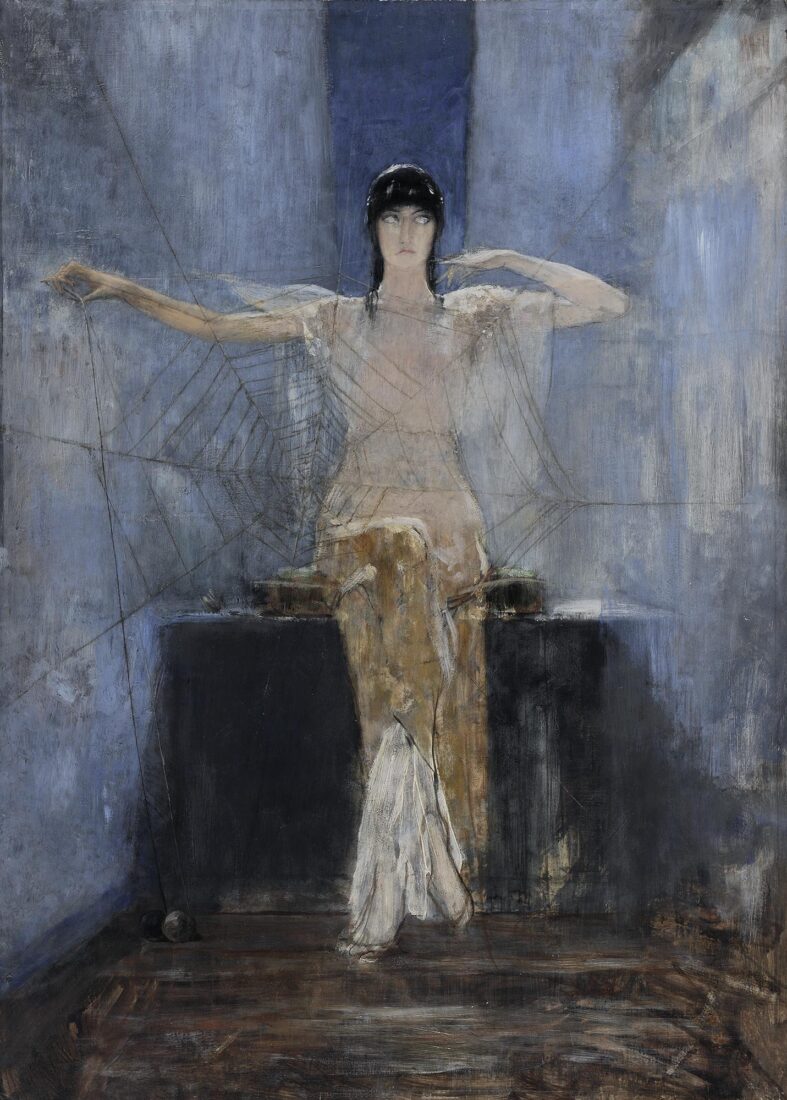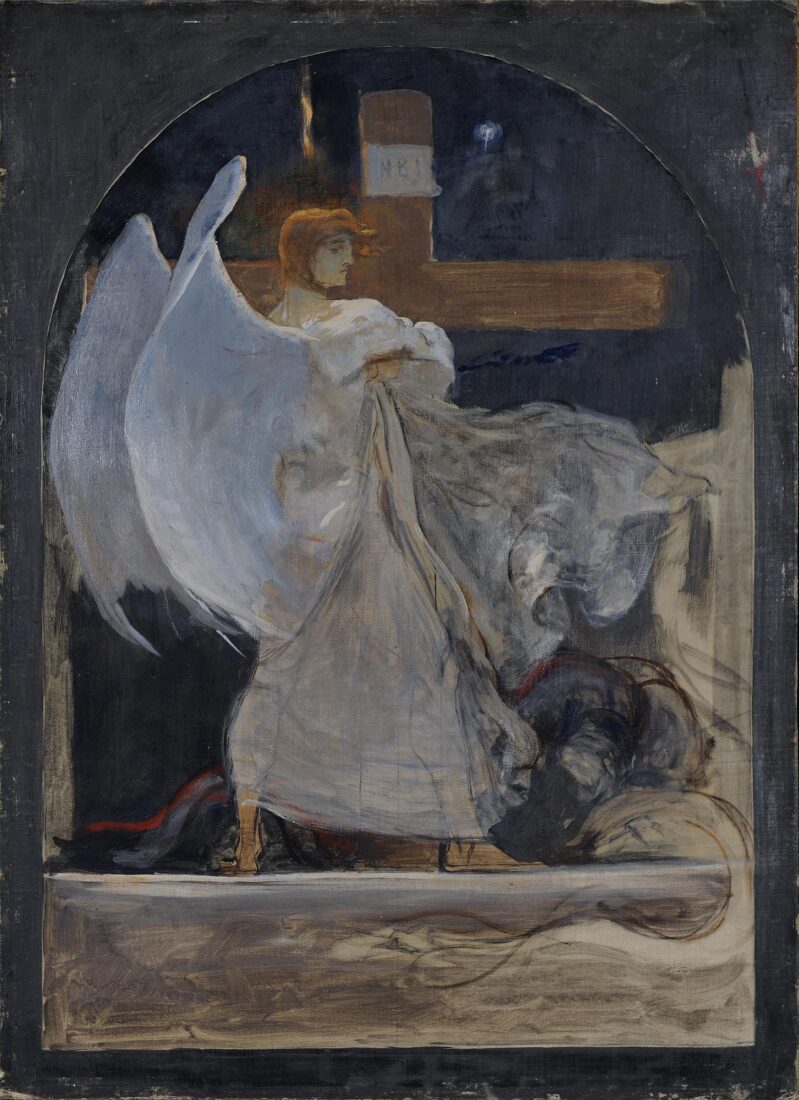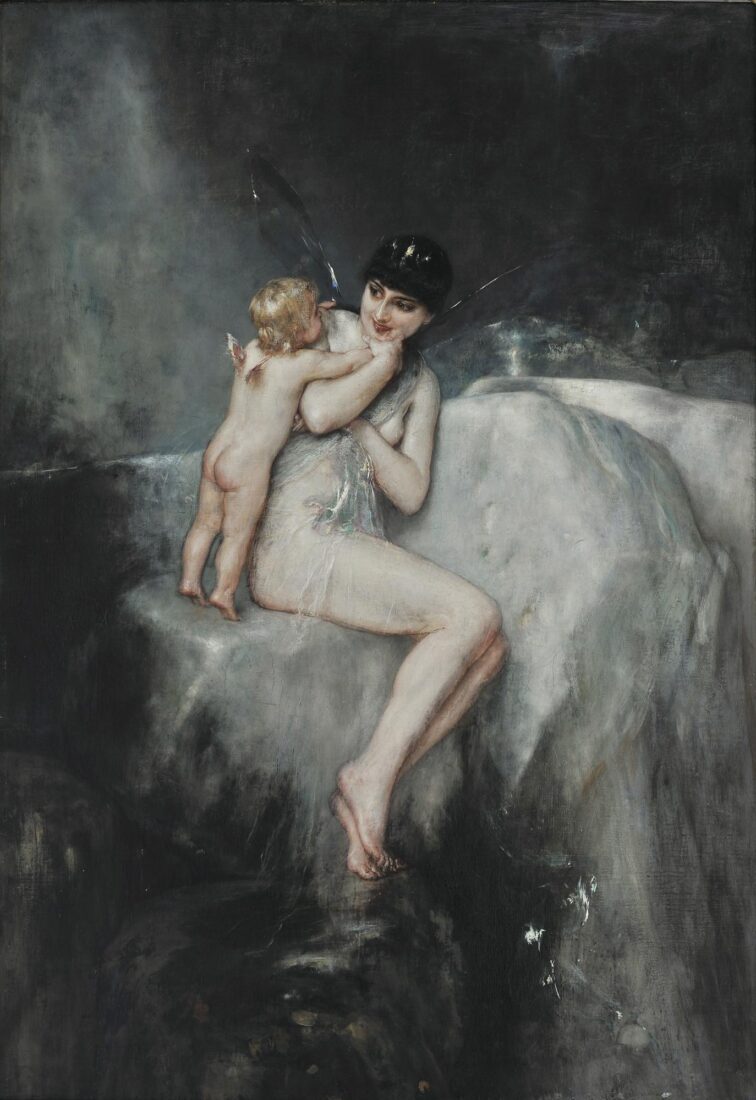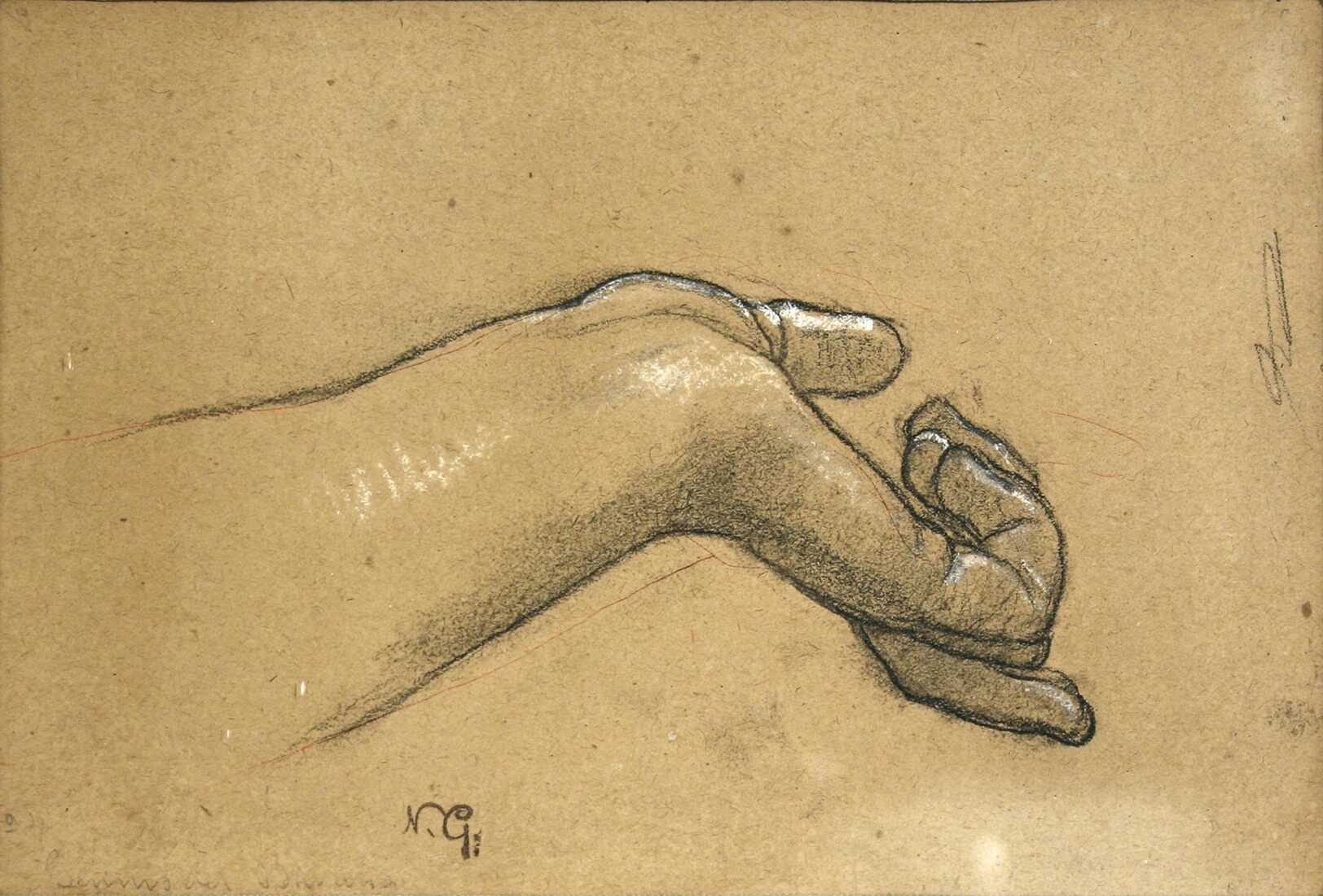

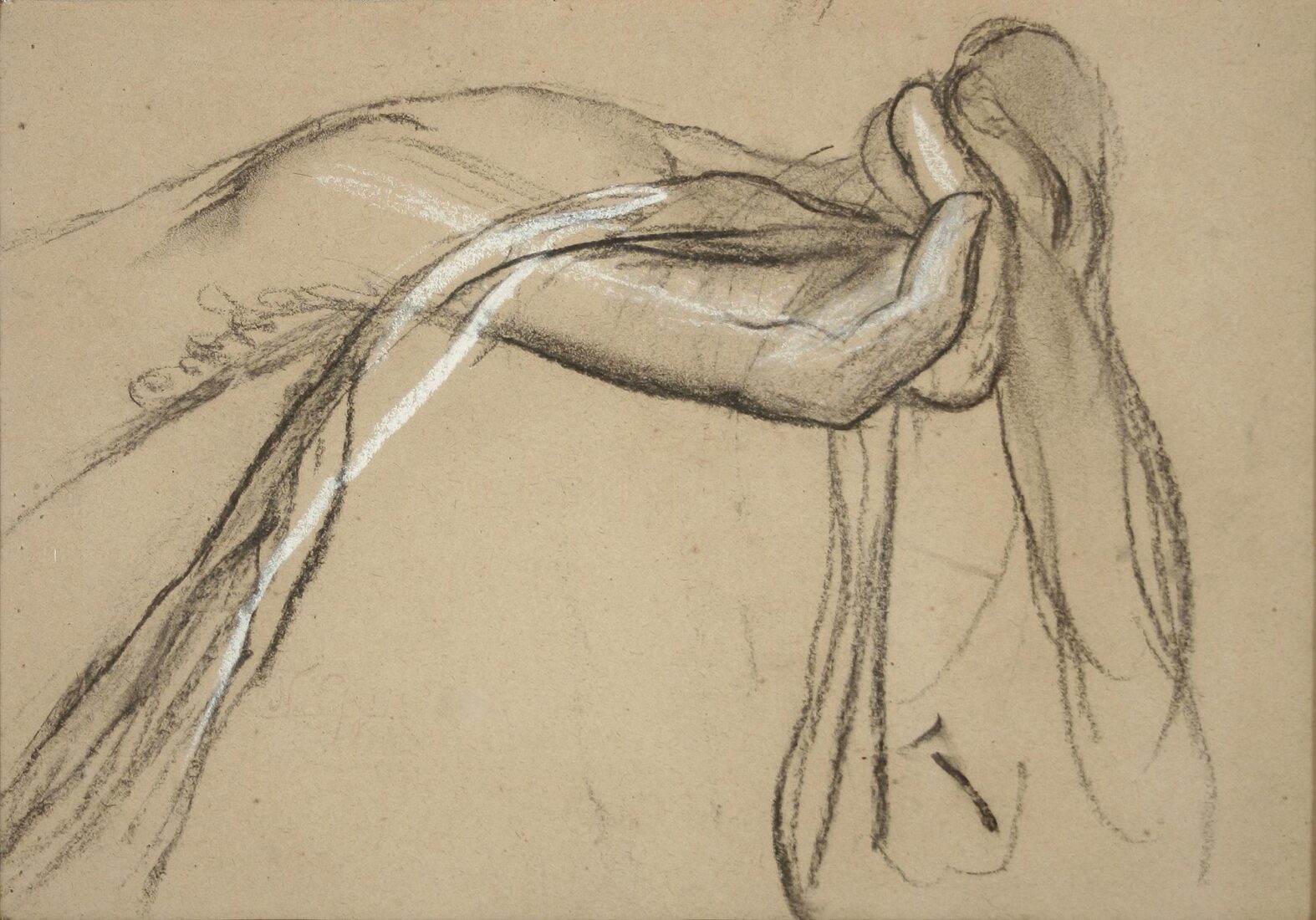
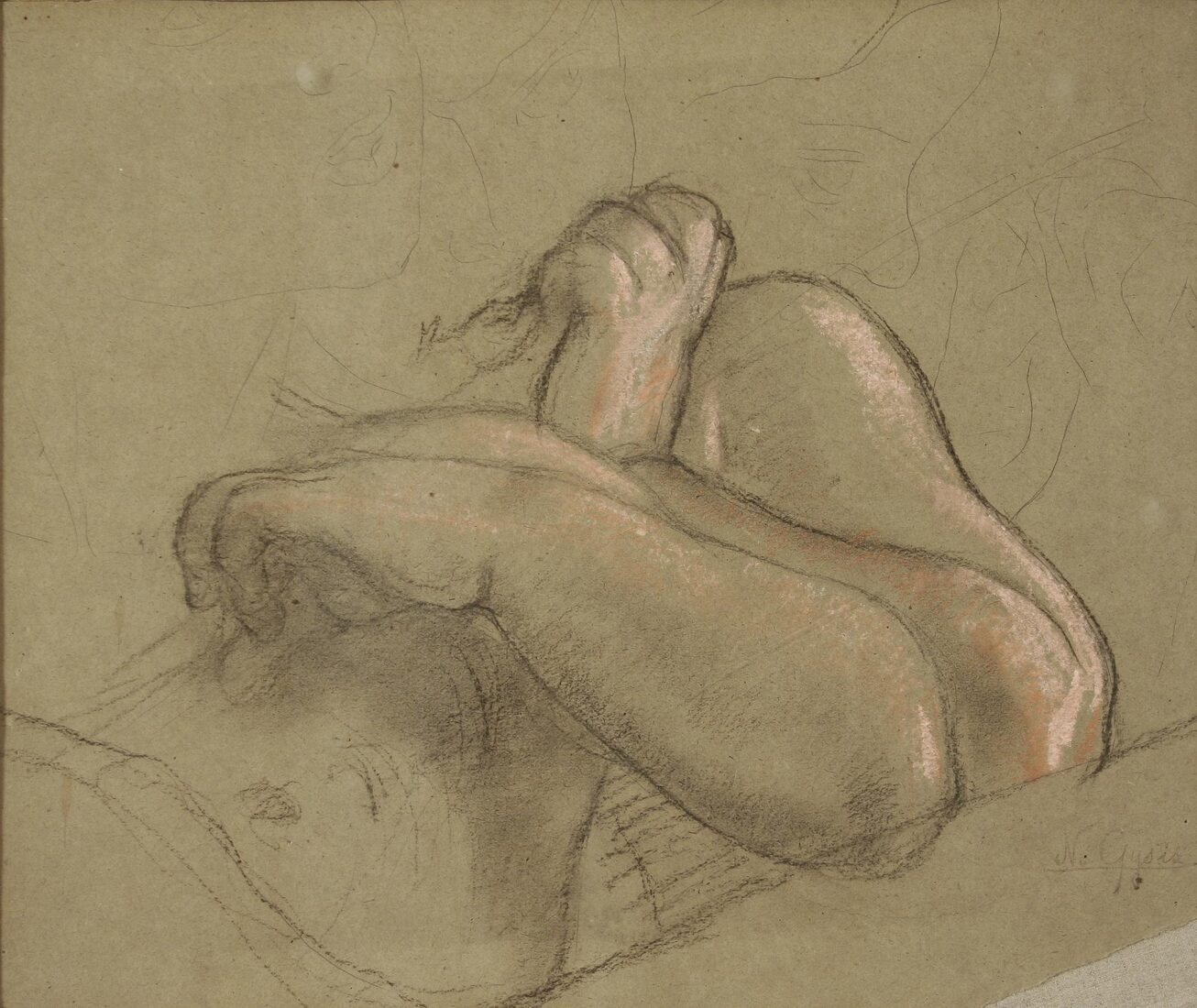
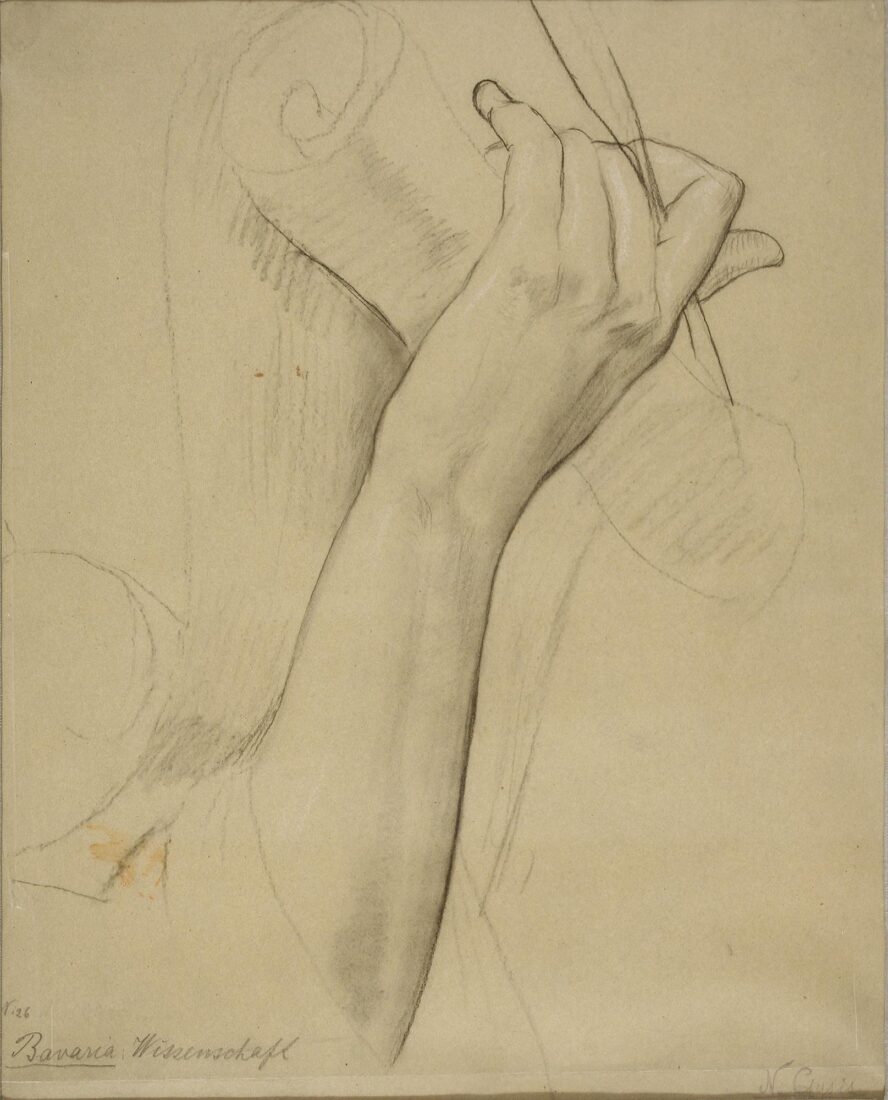
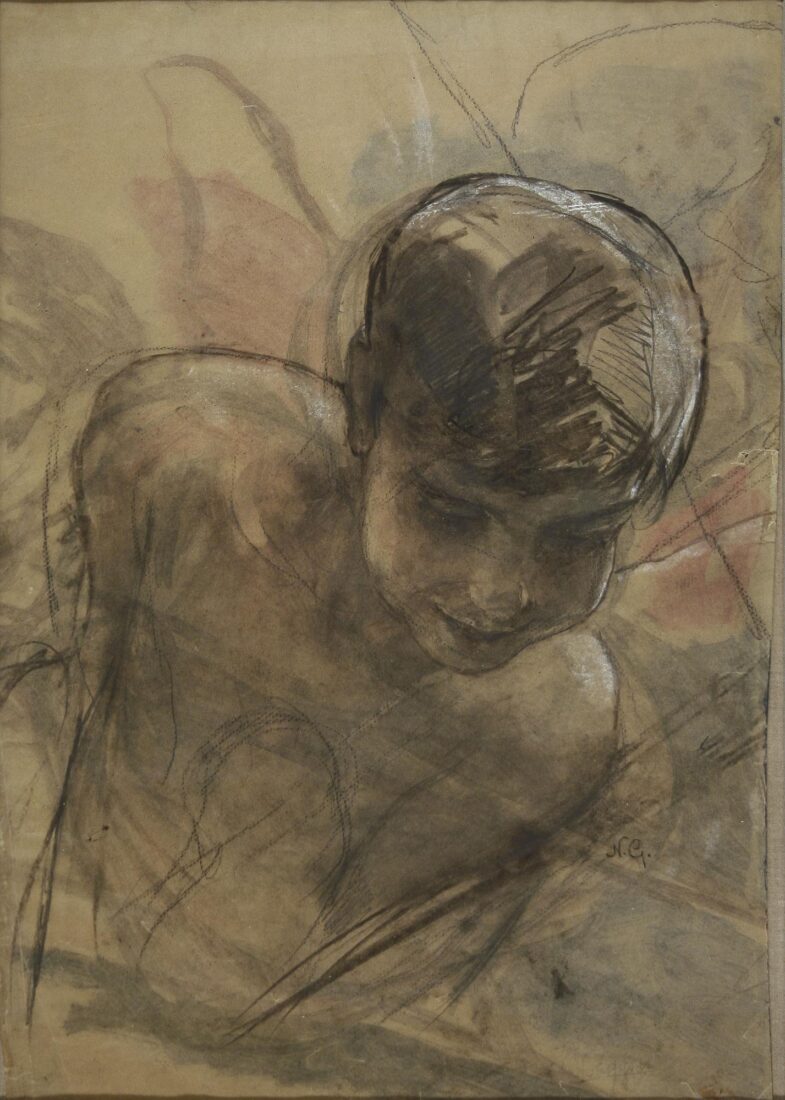
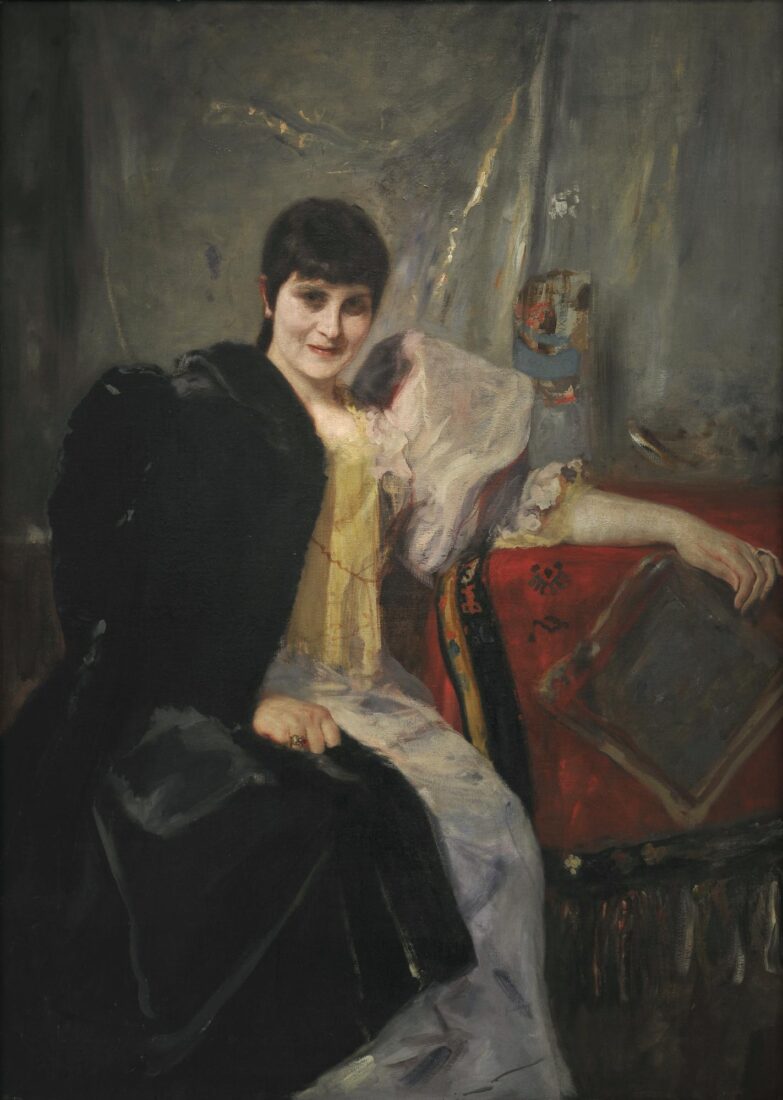
Free from the limitations imposed on him by his patrons, an artist who enlists members of his family as his models often expresses the inherent desire of his art. This bold portrait Gyzis made of his young and beautiful wife, Artemis Nazou, in 1890 is an example in question. The artist portrayed his wife seated, in a spontaneous pose, her one hand resting on a table, laid with a precious red table cloth. Her white silk dress is covered on the right-hand side with a brownish fur with purple tones, which the woman has put around her shoulders. Her smiling face is leaning slightly, creating shades in which the eye sinks into a reverie of darkness. The work has been painted with extreme freedom, luscious multiple-layer glaze coats and extraordinary boldness in colour.
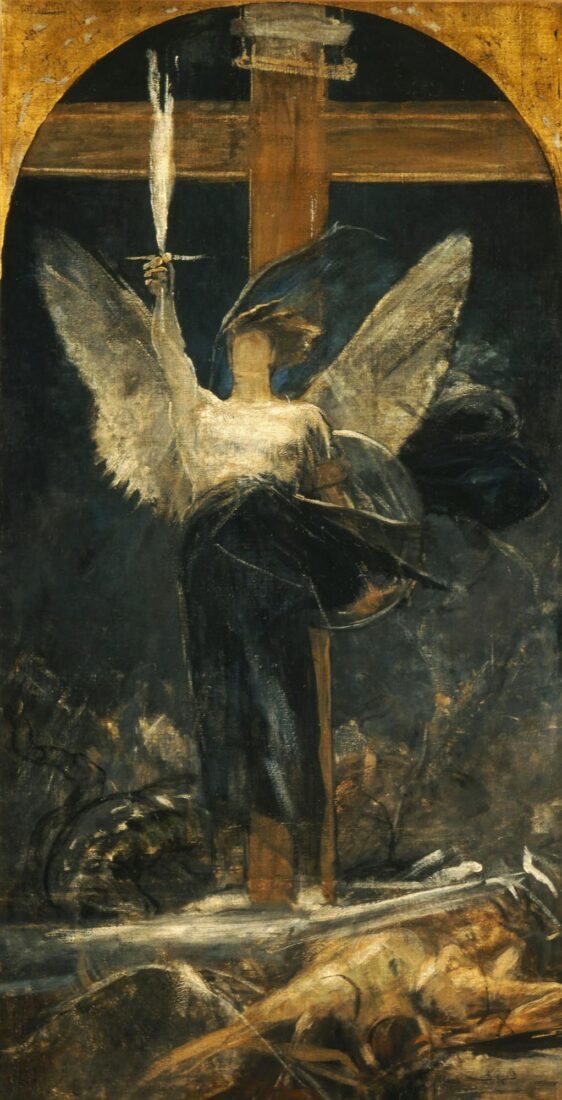
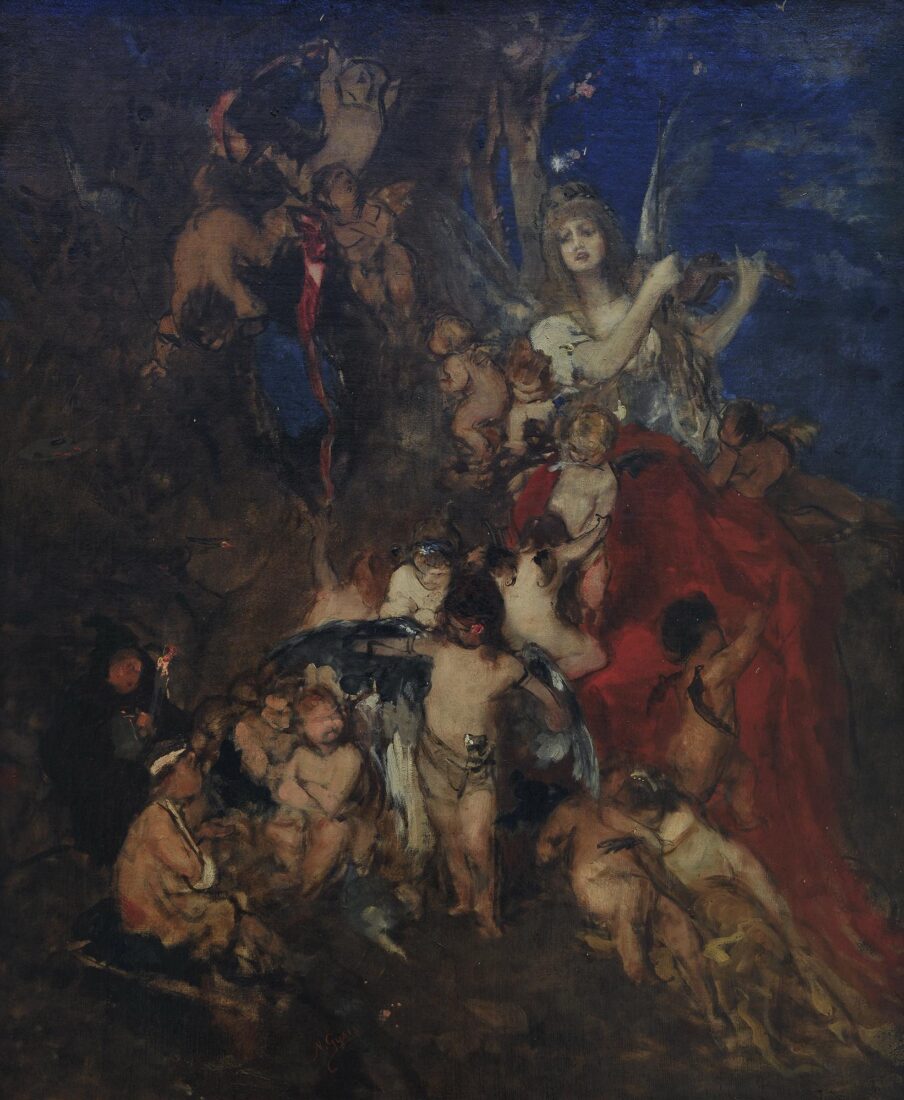
One of Gyzis’ earliest paintings of a symbolic nature. The main figure in “Art and its Spirits” is that of a beautiful winged girl, an angel playing the violin. The reason is perhaps that Gyzis considered music as a superior form of art. The other arts are embodied by the little Erotes (putti), surrounding her like a swarm of bees, playing with the tools of various arts. The purple skirt of the main figure, pouring down like a river, dominates the composition. Upon closer look, the composition appears to be organized on the diagonal defined by the movement of the little angels and two arches, one on the top right corner and the other on the bottom of the composition. Part of the Baroque formal vocabulary, the diagonal arrangement adds great dynamism to the composition. Warm brown-red tones prevail along with black and white colours.
